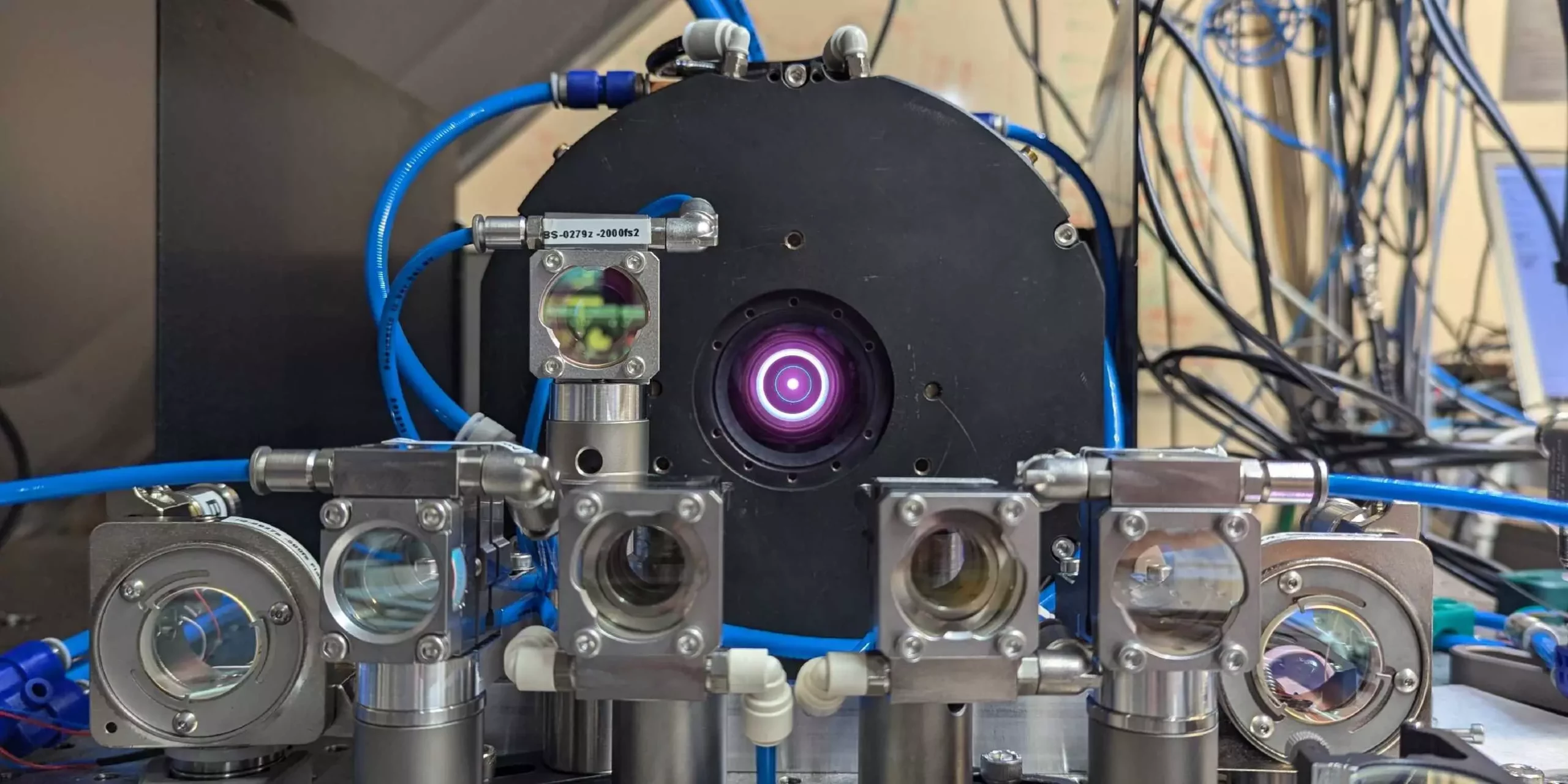Lasers are frequently depicted as powerful beams of light that can slice through various materials or create intense illumination. Yet, the underlying physics of lasers extends beyond this conventional understanding. While continuous beams of light are widely acknowledged, there exists a distinct category of lasers that emit very short and potent pulses of light. These ultra-short laser pulses play a crucial role in numerous scientific and industrial applications, enabling advancements such as material machining with unprecedented precision and facilitating the observation of rapid interactions at the attosecond scale—a timeframe that defies ordinary human comprehension.
In a significant advancement in laser technology, a research team at ETH Zurich, led by Professor Ursula Keller at the Institute for Quantum Electronics, has set a new benchmark in the creation of laser pulses. Their recent work has resulted in pulses that not only exceed previous accomplishments by over 50% with an average power of 550 watts but also generate pulse durations shorter than a picosecond. This achievement is monumental, as these bursts of light occur at an extraordinary rate of five million pulses per second, reaching peak powers that theoretically could power up to 100,000 vacuum cleaners simultaneously.
This pioneering research, documented in the journal *Optica*, showcases Keller’s dedication to refining short-pulsed disk lasers over the past quarter-century. The laser design employed comprises an exceedingly thin crystal disk—just 100 micrometers thick—containing ytterbium atoms, which serve as the foundation of the laser medium.
Overcoming Challenges in Laser Technology
Throughout their research journey, Keller and her team have confronted formidable challenges, often compounded by catastrophic failures involving the laser’s internal components. These trials, however, facilitated valuable insights that ultimately enhanced the reliability and efficiency of short-pulsed lasers, which are increasingly prevalent in industrial applications. As Moritz Seidel, a Ph.D. student in Keller’s lab, explains, the recent advancements hinge on two pivotal innovations: a sophisticated mirror arrangement that enables significant amplification without destabilizing the system, and the use of a Semiconductor Saturable Absorber Mirror (SESAM) to convert continuous light into high-intensity pulses.
The unique SESAM technology is especially noteworthy, as it functions differently from traditional mirrors. Instead of reflecting all incoming light uniformly, the SESAM reflects light in a variable manner that is sensitive to the light’s intensity. This characteristic is crucial in amplifying the intensity of the short pulses generated, ultimately fostering the laser’s transition to a pulsed output.
The implications of this technological advancement are vast. The ability to create high-power laser pulses opens up new frontiers not just in precision measurement but also in theoretical physics. Keller envisions further refinements that could lead to the generation of attosecond pulses—an endeavor that could revolutionize the understanding of fundamental physics and potentially reveal new insights about nature itself. Such refined measurements may even challenge the notion of “constant” natural constants, leading researchers to explore whether these are indeed variable.
Moreover, the ability to create terahertz radiation through these powerful pulses extends the potential applications even further. Terahertz radiation has unique properties that can be harnessed in material testing, communications, and medical imaging, further stressing the transformative power of these innovations.
A Shift in Laser Technology Perspective
The conclusions drawn from Keller’s research suggest that laser oscillators are a feasible and advantageous alternative to traditional, amplifier-based laser systems. This shift carries with it the promise of enhanced measurement capabilities across disciplines, from material sciences to fundamental physics. The prospects of integrating such pulsed lasers into frequency combs could lead to the development of even more precise atomic clocks, further pushing the boundaries of time measurement technology.
The progress made by the ETH Zurich team under Ursula Keller marks a remarkable milestone in the field of quantum electronics. With their groundbreaking work, they not only redefine the potential of laser technology but also pave the way for future explorations into the very fabric of our universe. The convergence of high power, rapid pulse rates, and the innovative use of SESAM mirrors promises to unlock new dimensions in precision technology, making it an exciting era for researchers and industries alike.

